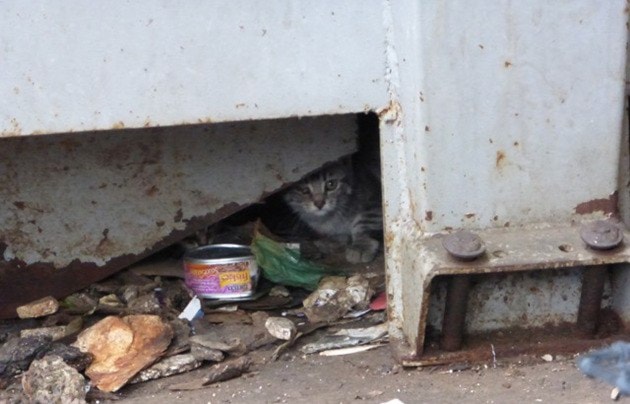Vanderhoof now has a society to not only promote pet welfare, but also to control the district’s feral cat population.
Officially established on Nov. 17, the Greater Nechako Animal Welfare Society (GNAWS) started their work in August this year, identifying feral cat population and reaching out the colony caretakers, said Kathleen Hebb, the society’s president.
19 kittens since then have been rescued so far, including socializing and providing them with veterinary care in preparation for adoption, she said.
As a new organization with limited volunteers and no funding, GNAWS is currently applying for a grant from the British Columbia Society for the Prevention of Cruelty to Animals, as well as matching funding from the District of Vanderhoof, to establish a trap-neuter-return program for abandoned, stray, and feral cats in town, Hebb added.
To control the population, part one is to identify and track the existing cats, and part two is to shrink down the population, she said.
The District of Vanderhoof currently offers cat license tags for free in 2016 — the first year of the initiative.
“The idea is to target certain areas and reduce the feral cat population,” she said. “There are currently three to four colonies in town, including a dumpster and under a house.”
Adult feral cats can only be neutered as they became too wild, while kittens can still be socialized and be adopted by families, Hebb explained.
Vanderhoof’s feral cat problem stems from different angles, such as people’s perception of cats in general and as a rural community with barn cats, she added.
“A lot of these cats, I believe, have been abandoned, by the museum, end of a driveway, etcetera,” Hebb said. “People value dogs more than cats.”
She added, “People think we don’t have to take care of cats like dogs, as they can take care of themselves, but they are still a domesticated animal.”
Exposed to the elements, most feral cats may only live for two years, and their many babies also live very short, hard lives, she said.
In partnership with the Canadian Animal Assistance Team (C.A.A.T.), GNAWS will be looking to host a free community neuter and wellness clinic in Vanderhoof in 2017, for those who may not have the resources to “fix” their pets. The federal charity is supported by volunteer veterinarians and farmers across Canada, and is already fully booked for next year, Hebb said.
Meanwhile, before funding arrives, the new society can only refer individuals needing assistance, for rescuing animals or finding them homes, to resources in Prince George, she added.
The existing animal welfare societies in nearby communities — including Saik’uz First Nation, Burns Lake, Fort St. James, and Quesnel — have been supportive, a tight-knit network that shares expertise and different excess resources from their respective areas, Hebb explained.
For example, the Lakes Animal Friendship Society can provide education materials for kids, Saik’uz First Nation has an emergency pet food bank and the Crooked Leg Ranch in Quesnel has extra animal travel crates for transporting pets to larger centres such as Vancouver, where the demand for animals to adopt is higher, she said.
Locally, partnering with Dr. Doug Ebbot in Vanderhoof Veterinarian Clinic, GNAWS now allows cat owners to neuter their pet at a reduced price.
“It’s a good cause,” Ebbot said. “They are doing it the right way.”
The new society provides a humane way to control the feral cat population in town, instead of resorting to euthanization, or leaving them to die by starvation or disease, he said.
